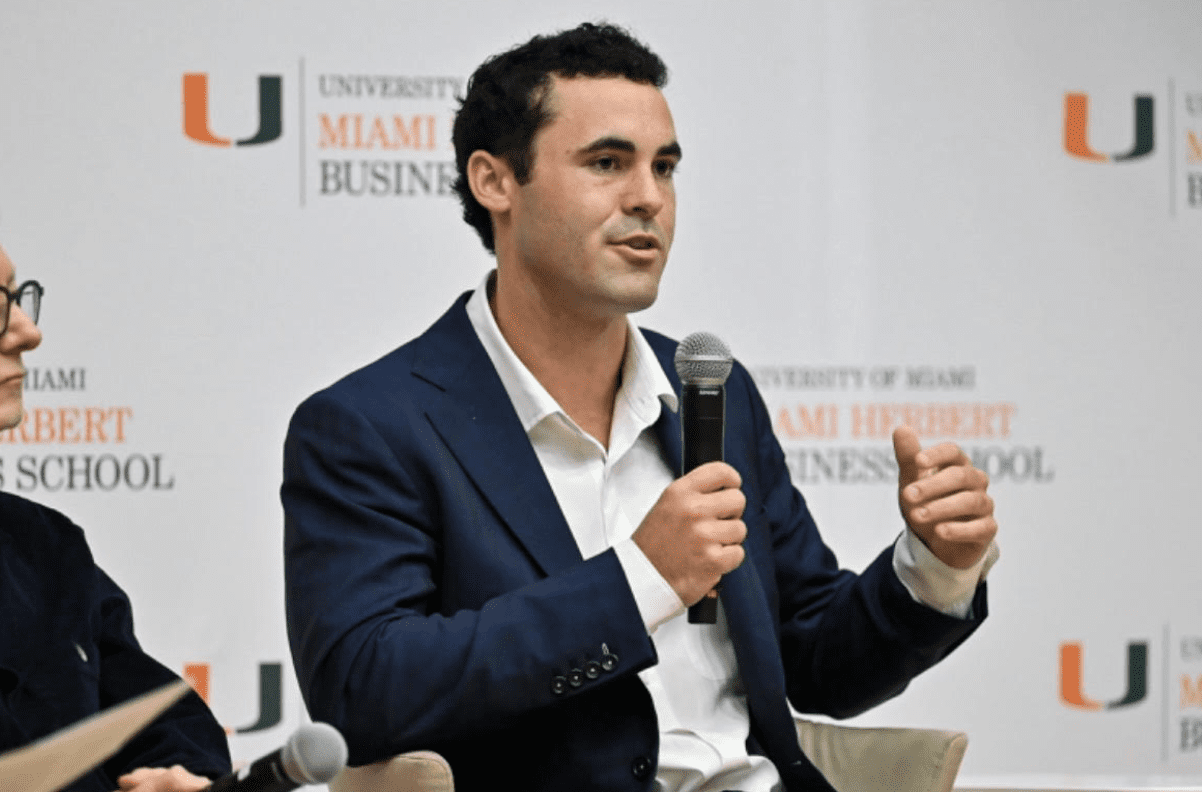
The Social Safety Revolution: How 3rd-i is Preventing Tragedies Before They Happen
By Dorothy Hill
In the latest episode of From the Hill To The Trenches The Search for Justice, host Dorothy Hill talks with Dillon Abend, founder and CEO of 3rd-i, about the rising safety risks students face while using rideshare services. Dillon Abend is a University of Miami graduate with a background in finance and marketing who became aware of the dangers of student transportation early in his college career. He has spent years studying patterns of rideshare assaults and developing technology that can provide students with real-time protection. His experience as a student and researcher allows him to bridge the gap between data, technology, and student safety.
The focus of this episode centers on the thousands of assaults reported in rideshare trips nationwide, the limitations of existing emergency response systems, and the innovative live-streaming tools that offer practical solutions. The conversation uncovers how students often face danger in everyday trips and how peer-driven safety technology can change outcomes.
This blog post explores the key insights from the episode, examines the current gaps in student safety, presents a new approach to rideshare protection, and explains how universities and students can adopt technology that actually works.
Safety Challenges Students Face in Rideshare
College students encounter safety risks in rideshare services more often than they realize. Studies and research reveal that thousands of students experience harassment or assault while using these services, yet traditional reporting and tracking methods fail to capture the full scope of the problem. Abend’s research shows that millions of rides have hidden incidents because official statistics only account for a fraction of actual occurrences.
Students often rely on basic strategies like calling friends during the ride or texting when they arrive, but these measures frequently fail. Phones die, friends do not answer, or there is no evidence collected if something happens. The systems intended to provide protection rarely reflect the reality of a student traveling alone in a moving vehicle with a potential aggressor nearby.
Universities have attempted to implement safety apps, but adoption rates are meager. Most apps have outdated designs, low ratings, and minimal usage. Students are unlikely to trust or use tools recommended by administrators, making it clear that traditional safety measures are often ineffective. From the Hill To The Trenches: The Search for Justice highlights these challenges and sets the stage for examining more effective, peer-driven solutions.
The Gaps in Emergency Response Systems
Emergency response systems are not designed for the specific scenarios students face during rideshare trips. Traditional 911 calls assume victims have privacy, time, and safety, but these conditions are rarely present in a moving vehicle. Students cannot always safely reach a dispatcher without alerting the aggressor.
Cross-jurisdiction issues further complicate the process. When calls originate in a different state or city, local dispatchers must determine the correct location and contact the appropriate authorities. This often results in delayed response times, which can take up to forty-five minutes in critical situations.
These delays and limitations reveal a systemic flaw that leaves students unprotected during vulnerable moments. Students need tools that integrate with their environment, provide immediate assistance, and maintain privacy while alerting trusted contacts and authorities. This gap prompted the development of new technology that focuses on peer-supported safety and real-time monitoring.
Peer-Driven Safety Technology and Its Impact
Dillon Abend developed 3rd-i to address the shortcomings of traditional safety systems. The app functions like a live-streaming body camera that sends real-time video to trusted friends. Both front and rear cameras record interactions while the group receives instant notifications and can provide guidance during emergencies.
A key feature of the technology is silent emergency dispatch. Students can notify authorities with one tap without the aggressor knowing, sending live video and GPS coordinates to responders. This innovation ensures that students have protection while maintaining discretion in critical situations.
One case in Miami demonstrates the system’s effectiveness. A student entered the wrong vehicle and began a dangerous interaction with the driver. Friends guided her through the situation using the app, helping her escape safely while recording evidence. Incidents like these show that peer-supported, real-time technology can prevent escalation and ensure students reach safety.
Building Awareness and Adoption on Campus
Creating a solution is only effective if students use it. Abend focused on peer-driven adoption rather than institutional mandates. Using a network of over 3,000 student influencers and campus ambassadors, the app spreads through authentic recommendations rather than administrative enforcement.
Universities can replace unused safety apps with solutions that achieve actual engagement. The approach combines awareness campaigns, social proof, and integration with student communities to drive consistent adoption. Students are more likely to use technology endorsed by peers who understand their experiences and challenges.
The app also includes an anonymous posting feature that allows students to share safety alerts with their campus community. These updates provide location-specific warnings and create a collaborative environment for preventing incidents. Students can collectively monitor risky situations and act before emergencies escalate.
Benefits of Peer-Driven Safety Technology
Real-time monitoring by trusted friends during rideshare trips
Silent emergency alerts with video and GPS for law enforcement
Anonymous campus alerts to share information without filing formal reports
Higher adoption rates compared to traditional safety apps
Evidence collection that can support legal or disciplinary action
Prioritizing Safety Solutions
Student safety during rideshare trips cannot be left to chance or ineffective systems. The insights shared in From the Hill To The Trenches:The Search for Justice reveal a new approach that relies on peer-supported technology, real-time monitoring, and community engagement. Universities, parents, and students can make a tangible difference by adopting tools like 3rd-i that integrate with everyday student life and provide actual protection.
Students and campuses must prioritize solutions that work, encourage peer adoption, and support safe transportation. Listening to the full episode offers additional strategies for implementing safety technology, creating awareness, and ensuring that students have the resources to protect themselves effectively.
Listen to the complete conversation between Dorothy Hill and Dillon Abend on From the Hill to the Trenches: The Search for Justice for additional insights about live-streaming safety technology, emergency response innovation, and practical strategies for protecting college students in rideshare situations.
Follow From the Hills to the Trenches: The Search for Justice:
Website: Hill2Trenches.com
Follow Dorothy Hill:
LinkedIn: @dorothy-hill
Follow Dillon Abend & 3rd-i
LinkedIn Profile: @dillon-abend-762976172Instagram: @d_abend12
Official Website:3rd-i.com
Instagram: @3rd_i_app
LinkedIn: @3rd-i-technology-incorporated
Listen us on every major platform!
What Our
Customers Are Saying
It is a long established fact that a reader will be distracted by the readable content of a page when looking at its layout. The point of using Lorem Ipsum is that it has a more-or-less normal distribution of letters, as opposed to using 'Content here, content here', making it look like readable English.

It is a long established fact that a reader will be distracted by the readable of a page when looking at its layout.








Comments